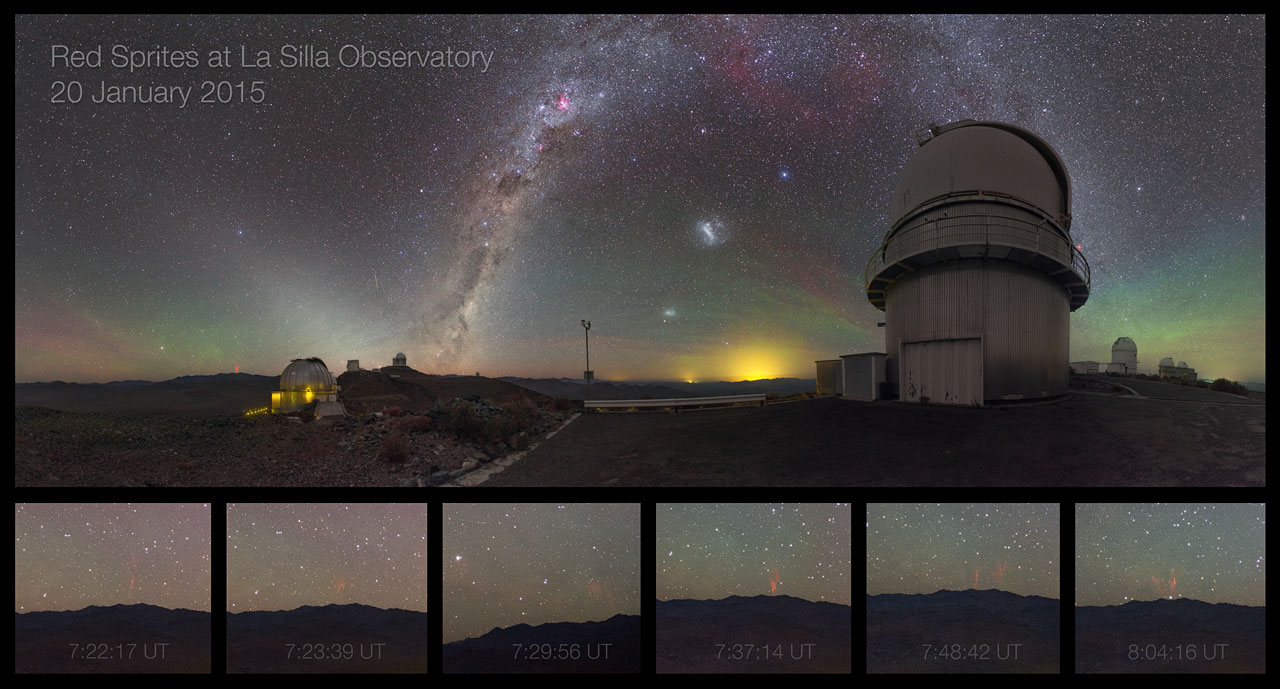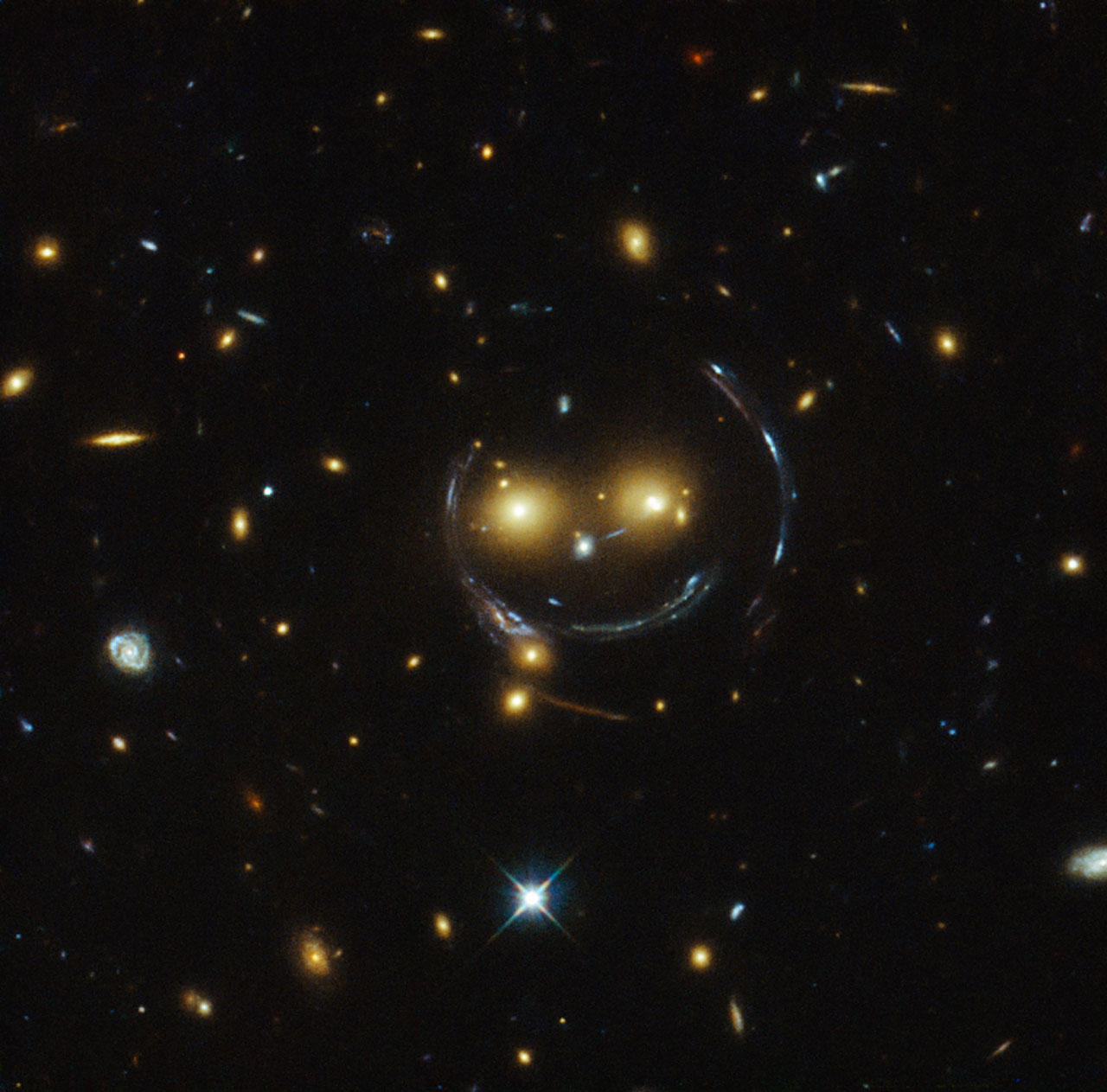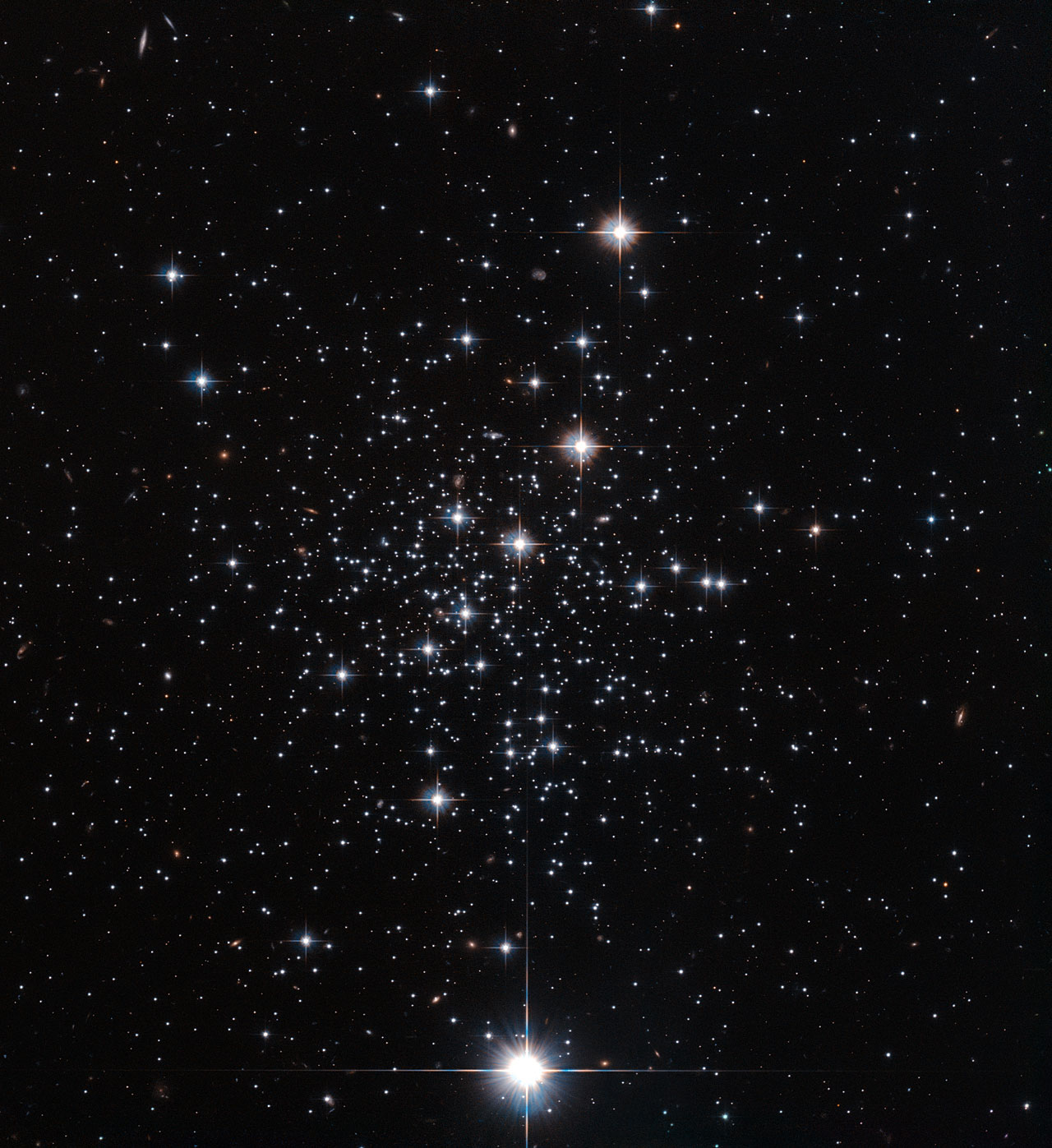Found Images: 2015 February
Found Images: 2015 February
Have you seen a great image or video somewhere that you think would make a great APOD? Nominate it for APOD! Please post as much information here as you have about the image/video with a link to any source(s) for it you know of here, and the editors will take a look.
When posting the image itself, please do not post anything larger than a thumbnail here; please honor the copyright holder's copyright.
Please keep hotlinked images under 400K.
Thank you!
-
starsurfer
- Stellar Cartographer
- Posts: 5409
- Joined: Thu Mar 15, 2012 7:25 pm
ESO: Midsummer Night Brings Sprites
Midsummer Night Brings Sprites
ESO Picture of the Week | 2015 Feb 02
ESO Picture of the Week | 2015 Feb 02
Rare phenomenon caught on camera at La Silla
This unique and spectacular image of ESO’s La Silla Observatory features a cloudless sky stained with red and green airglow and bejewelled with celestial objects. Amongst the celestial cast are the Small and Large Magellanic Clouds just to the right of centre, the rosy-red glow of various star-forming regions and the faint green streak of a meteor just to the left of the Milky Way. These striking heavenly regulars are eclipsed however by the presence of something far more elusive and much closer to home.
The six panels below the main image magnify a series of extremely rare atmospheric phenomenon known as sprites. A few hours before daybreak — signalled by the spire of zodiacal light rising from the base of the Milky Way — a powerful thunderstorm appeared on the distant horizon, and the Earth’s upper atmosphere became a playground for these ephemeral events.
Named after Shakespeare’s mischievous sprites Puck, from A Midsummer Night’s Dream, and Ariel, from The Tempest, sprites are caused by irregularities in the ionosphere, high above storm clouds, at altitudes of about 80 kilometres. Typically seen as groups of red-orange flashes, they are triggered by positive cloud-to-ground lightning, which is rarer and more powerful than its negative counterpart, as the lightning discharge originates from the upper regions of the cloud, further from the ground. In a short burst, the sprite extends rapidly downwards, creating dangling red tendrils before disappearing.
The sprites pictured here occurred over the course of about 40 minutes and were most likely over 500 kilometres away (compare with a satellite image showing the storm over Argentina), with each one spanning a height of up to 80 kilometres and lasting only a fraction of a second. Notoriously difficult to capture with anything other than specialised scientific cameras, these airy spirits rewarded the patience of ESO Photo Ambassador Petr Horálek with this tremendous series of images.
Petr captured another beautiful sprite image at La Silla, and, a few days later at Paranal, he captured this amazing shot from the VLT platform (originating from this storm).
Know the quiet place within your heart and touch the rainbow of possibility; be
alive to the gentle breeze of communication, and please stop being such a jerk. — Garrison Keillor
alive to the gentle breeze of communication, and please stop being such a jerk. — Garrison Keillor
ESA/HEIC: Dancing on the Edge (NGC 7814)
Dancing on the Edge
ESA Hubble Picture of the Week | 2015 Feb 02
ESA Hubble Picture of the Week | 2015 Feb 02
Galaxies can take many shapes and be oriented any way relative to us in the sky. This can make it hard to figure out their actual morphology, as a galaxy can look very different from different viewpoints. A special case is when we are lucky enough to observe a spiral galaxy directly from its edge, providing us with a spectacular view like the one seen in this picture of the week.
This is NGC 7814, also known as the “Little Sombrero”. Its larger namesake the Sombrero Galaxy is another stunning example of an edge-on galaxy — in fact, the “Little Sombrero” is about the same size as its bright namesake at about 60 000 light-years across, but as it lies further away, it appears smaller in the sky.
NGC 7814 has a bright central bulge and a bright halo of glowing gas extending outwards into space. The dusty spiral arms appear as dark streaks. they consist of dusty material that absorbs and blocks light from the galactic centre behind it. The field of view of this NASA/ESA Hubble Space Telescope image would be very impressive even without NGC 7814 in front; nearly all the objects seen in this image are galaxies as well. ...
Know the quiet place within your heart and touch the rainbow of possibility; be
alive to the gentle breeze of communication, and please stop being such a jerk. — Garrison Keillor
alive to the gentle breeze of communication, and please stop being such a jerk. — Garrison Keillor
-
lizarranet
- Ensign
- Posts: 31
- Joined: Thu Feb 09, 2012 8:25 am
Re: Found Images: 2015 February
moved to the right Thread...
Sorry...
Sorry...
Last edited by lizarranet on Tue Feb 03, 2015 5:02 pm, edited 1 time in total.
-
starsurfer
- Stellar Cartographer
- Posts: 5409
- Joined: Thu Mar 15, 2012 7:25 pm
Re: Found Images: 2015 February
NGC 7497
http://www.karelteuwen.be/photo_page.ph ... 2&album=14
Copyright: Karel Teuwen The integrated flux nebulosity is catalogued as MBM 54.
http://www.karelteuwen.be/photo_page.ph ... 2&album=14
Copyright: Karel Teuwen The integrated flux nebulosity is catalogued as MBM 54.
-
starsurfer
- Stellar Cartographer
- Posts: 5409
- Joined: Thu Mar 15, 2012 7:25 pm
Re: Found Images: 2015 February
Cocoon Nebula (IC 5146)
http://www.astro-koop.de/?attachment_id=1477
Copyright: Stefan Heutz, Wolfgang Ries and Michael Breite
http://www.astro-koop.de/?attachment_id=1477
Copyright: Stefan Heutz, Wolfgang Ries and Michael Breite
-
starsurfer
- Stellar Cartographer
- Posts: 5409
- Joined: Thu Mar 15, 2012 7:25 pm
Re: Found Images: 2015 February
B3
http://afesan.es/Deepspace/slides/Barna ... us%29.html
Copyright: Antonio Sánchez This dark nebula is located near the centre of the emission/reflection nebula Ced 18a.
http://afesan.es/Deepspace/slides/Barna ... us%29.html
Copyright: Antonio Sánchez This dark nebula is located near the centre of the emission/reflection nebula Ced 18a.
-
starsurfer
- Stellar Cartographer
- Posts: 5409
- Joined: Thu Mar 15, 2012 7:25 pm
- geckzilla
- Ocular Digitator
- Posts: 9180
- Joined: Wed Sep 12, 2007 12:42 pm
- Location: Modesto, CA
- Contact:
Re: Found Images: 2015 February
A nice photo of Africa by Samantha Cristoforetti from the ISS.
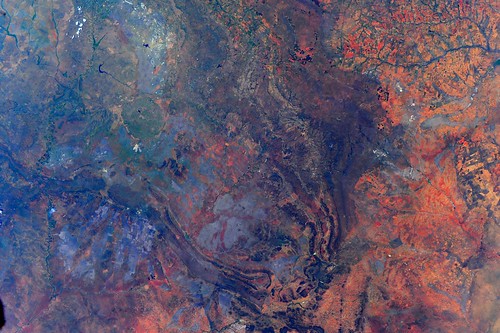
Colors going wild in #SouthAfrica by AstroSamantha, on Flickr

Colors going wild in #SouthAfrica by AstroSamantha, on Flickr
Just call me "geck" because "zilla" is like a last name.
ESA/HEIC: A Smiling Lens
A Smiling Lens
ESA Hubble Picture of the Week | 2015 Feb 09
ESA Hubble Picture of the Week | 2015 Feb 09
In the centre of this image, taken with the NASA/ESA Hubble Space Telescope, is the galaxy cluster SDSS J1038+4849 — and it seems to be smiling.
You can make out its two orange eyes and white button nose. In the case of this “happy face”, the two eyes are very bright galaxies and the misleading smile lines are actually arcs caused by an effect known as strong gravitational lensing.
Galaxy clusters are the most massive structures in the Universe and exert such a powerful gravitational pull that they warp the spacetime around them and act as cosmic lenses which can magnify, distort and bend the light behind them. This phenomenon, crucial to many of Hubble’s discoveries, can be explained by Einstein’s theory of general relativity.
In this special case of gravitational lensing, a ring — known as an Einstein Ring — is produced from this bending of light, a consequence of the exact and symmetrical alignment of the source, lens and observer and resulting in the ring-like structure we see here.
Hubble has provided astronomers with the tools to probe these massive galaxies and model their lensing effects, allowing us to peer further into the early Universe than ever before. This object was studied by Hubble’s Wide Field and Planetary Camera 2 (WFPC2) and Wide Field Camera 3 (WFC3) as part of a survey of strong lenses.
A version of this image was entered into the Hubble’s Hidden Treasures image processing competition by contestant Judy Schmidt.
Know the quiet place within your heart and touch the rainbow of possibility; be
alive to the gentle breeze of communication, and please stop being such a jerk. — Garrison Keillor
alive to the gentle breeze of communication, and please stop being such a jerk. — Garrison Keillor
Re: Found Images: 2015 February
Nice, Geck! 
I assume the background galaxies really are quite blue or ultraviolet. Given the fact that these lensed galaxies are far in the background and therefore strongly affected by cosmological redshift reddening, their blue color seems to testify to a lot of ultraviolet light coming from these galaxies. In other words, the lensed galaxies speak of a time of intense star formation at a certain "look back time" (as I think it is called).
Ann
I assume the background galaxies really are quite blue or ultraviolet. Given the fact that these lensed galaxies are far in the background and therefore strongly affected by cosmological redshift reddening, their blue color seems to testify to a lot of ultraviolet light coming from these galaxies. In other words, the lensed galaxies speak of a time of intense star formation at a certain "look back time" (as I think it is called).
Ann
Color Commentator
-
starsurfer
- Stellar Cartographer
- Posts: 5409
- Joined: Thu Mar 15, 2012 7:25 pm
Re: Found Images: 2015 February
ETHOS 1
http://www.capella-observatory.com/Imag ... ETHOS1.htm
Copyright: Stefan Binnewies and Josef Pöpsel
http://www.capella-observatory.com/Imag ... ETHOS1.htm
Copyright: Stefan Binnewies and Josef Pöpsel
-
starsurfer
- Stellar Cartographer
- Posts: 5409
- Joined: Thu Mar 15, 2012 7:25 pm
-
starsurfer
- Stellar Cartographer
- Posts: 5409
- Joined: Thu Mar 15, 2012 7:25 pm
Re: Found Images: 2015 February
-
starsurfer
- Stellar Cartographer
- Posts: 5409
- Joined: Thu Mar 15, 2012 7:25 pm
ESA/HEIC: Panta Rhei — Motion in the Milky Way
Panta Rhei — Motion in the Milky Way
ESA Hubble Picture of the Week | 2015 Feb 16
ESA Hubble Picture of the Week | 2015 Feb 16
Panta rhei is a simplified version of the famous greek philosopher Heraclitus' teachings. It basically means, everything flows. And everything in the Universe is indeed continually on the move, spiralling and shifting through space.
Some cosmic objects move a little further than others — take the subject of this NASA/ESA Hubble Space Telescope image, a globular cluster of stars known as Palomar 12.
Although it currently lies on the outskirts of the Milky Way’s halo, Palomar 12 was not born here. When astronomers first studied this cluster, they were puzzled by its strangely young age when compared to the other clusters in the galaxy. It appeared to be around 30% younger than other Milky Way globulars. Surely if it had been born within our galaxy, it would have sprung to life at a similar time to its cluster companions?
A bit more digging revealed that Palomar 12 was actually ripped from its initial home, the Sagittarius Dwarf Elliptical galaxy, around 1.7 billion years ago via tidal interactions between its former home and our galaxy. The dwarf galaxy that Palomar 12 once called home is a satellite galaxy to ours, and closely orbits around us — even occasionally passing through the plane of our galaxy. In fact, it is being slowly torn apart and consumed by the Milky Way.
The sparkling stars in this picture were imaged by Hubble’s Advanced Camera for Surveys.
Know the quiet place within your heart and touch the rainbow of possibility; be
alive to the gentle breeze of communication, and please stop being such a jerk. — Garrison Keillor
alive to the gentle breeze of communication, and please stop being such a jerk. — Garrison Keillor
Found images 2015 feb 12 : Jupiter's moons
Hi!
I found these two exceptional pictures/animations on a french forum called Webastro. They both show the same event, the eclipse and occultation of Io by Ganymede.
- from "wilexpel" http://www.webastro.net/forum/showthread.php?t=125410

- from "Elie Rousset" http://www.webastro.net/forum/showthread.php?t=125380

Fred
I found these two exceptional pictures/animations on a french forum called Webastro. They both show the same event, the eclipse and occultation of Io by Ganymede.
- from "wilexpel" http://www.webastro.net/forum/showthread.php?t=125410

- from "Elie Rousset" http://www.webastro.net/forum/showthread.php?t=125380

Fred
-
starsurfer
- Stellar Cartographer
- Posts: 5409
- Joined: Thu Mar 15, 2012 7:25 pm
-
starsurfer
- Stellar Cartographer
- Posts: 5409
- Joined: Thu Mar 15, 2012 7:25 pm
Re: Found Images: 2015 February
Sh2-239
http://www.astroimager.net/Page-RHA-CCD-342.html
Copyright: Jim Janusz The dark nebula that Sh2-239 is part of is catalogued as LDN 1551.
http://www.astroimager.net/Page-RHA-CCD-342.html
Copyright: Jim Janusz The dark nebula that Sh2-239 is part of is catalogued as LDN 1551.
-
starsurfer
- Stellar Cartographer
- Posts: 5409
- Joined: Thu Mar 15, 2012 7:25 pm
Re: Found Images: 2015 February
LBN 442
http://www.astrobin.com/138754/
Copyright: Mario Lovrencie, Alessandro Milani and Alessandro Falesiedi
http://www.astrobin.com/138754/
Copyright: Mario Lovrencie, Alessandro Milani and Alessandro Falesiedi
-
starsurfer
- Stellar Cartographer
- Posts: 5409
- Joined: Thu Mar 15, 2012 7:25 pm
Re: Found Images: 2015 February
CB 238
http://www.photonhunter.at/MC_Lacerta.html
Copyright: Patrick Hochleitner This is one of 248 Bok globules from the Clemens and Barvainis catalogue, which was published in 1988.
http://www.photonhunter.at/MC_Lacerta.html
Copyright: Patrick Hochleitner This is one of 248 Bok globules from the Clemens and Barvainis catalogue, which was published in 1988.
-
starsurfer
- Stellar Cartographer
- Posts: 5409
- Joined: Thu Mar 15, 2012 7:25 pm
ESA/HEIC: A Galactic Cloak for an Exploding Star (NGC 4424)
A Galactic Cloak for an Exploding Star
ESA Hubble Picture of the Week | 2015 Feb 23
ESA Hubble Picture of the Week | 2015 Feb 23
The galaxy pictured here is NGC 4424, located in the constellation of Virgo. It is not visible with the naked eye but has been captured here with the NASA/ESA Hubble Space Telescope.
Although it may not be obvious from this image, NGC 4424 is in fact a spiral galaxy. In this image it is seen more or less edge on, but from above you would be able to see the arms of the galaxy wrapping around its centre to give the characteristic spiral form.
In 2012 astronomers observed a supernova in NGC 4424 — a violent explosion marking the end of a star’s life. During a supernova explosion, a single star can often outshine an entire galaxy. However, the supernova in NGC 4424, dubbed SN 2012cg, cannot be seen here as the image was taken ten years prior to the explosion. Along the central region of the galaxy, clouds of dust block the light from distant stars and create dark patches.
To the left of NGC 4424 there are two bright objects in the frame. The brightest is another, smaller galaxy known as LEDA 213994 and the object closer to NGC 4424 is an anonymous star in our Milky Way. ...
Know the quiet place within your heart and touch the rainbow of possibility; be
alive to the gentle breeze of communication, and please stop being such a jerk. — Garrison Keillor
alive to the gentle breeze of communication, and please stop being such a jerk. — Garrison Keillor
Re: Found Images: 2015 February
Stormcaller
https://www.flickr.com/photos/zarphag/16434705810/
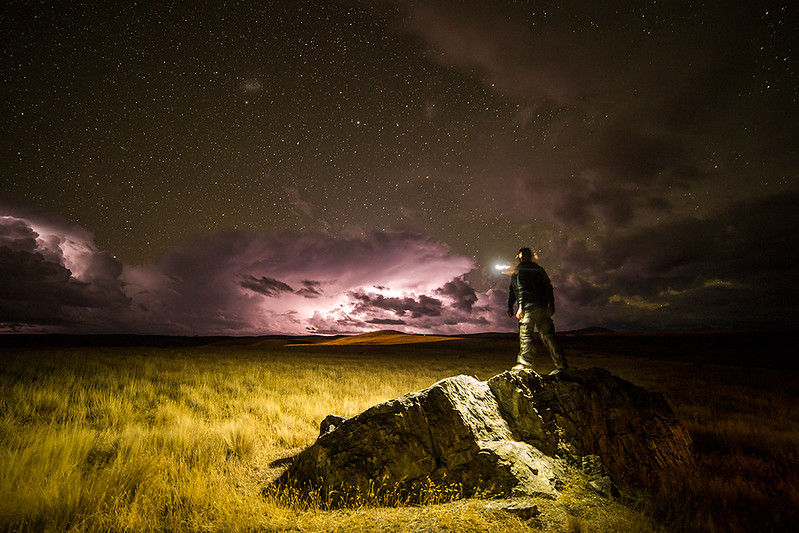
https://www.flickr.com/photos/zarphag/16434705810/

Called by gods, driven by demons, slicing the night sky with dazzling brilliance, the night sky lights up like a war on the plains of Vígríðr.
Surrounded by turmoil , lashed by driving rain , this is the calm centre of the nights fury. High over the Lakes of Tekapo and Alexandrina we watch this amazing show.
A late call at the weekend we head down to Lake Tekapo for some astro shooting. The skies were clear when we started, by the time we arrived we had total cloud cover and rain.
After a good feed at the grill, we headed out to see what we could shoot.
Finding ourselves on a hill above Lake Alexandrina we noticed some lightning in the distance.
This turned into an epic light show , with many strikes every minute in every direction of the compass. We were literally in the eye of a huge storm.
The weather turned wild and we rode it out until heavy rain drove us into our tents.
I've never experienced the power and frequency of a storm like this!
Sadly in the early hours of Sunday morning the wind blew my tripod over and ended the life of my poor 6D.
